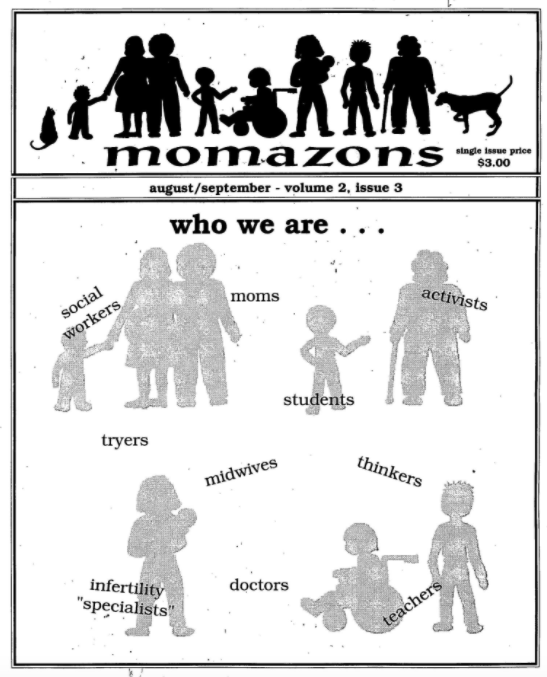The cover of vol, 2 issue 3 of ‘Momazons’, a newsletter for lesbian mothers. September 1993.
This past month I have found myself thinking a great deal about how my work would be going differently if I was able to do research in person at the Herstory Archives. I find myself getting headaches from staring at my computer screen for so long, from having to focus all of my attention to one 11″ x 7″ frame instead of across papers spread out on a desk. The ink on the digitized newsletters is grainy and faded, and though GALE is not the most difficult digital archive I have ever navigated, the hypertext is so dense that I am always clicking past what I need to read. These obstacles have not prevented me from doing my research, but since I have been feeling burned out lately, it feels helpful to acknowledge them. I am not experiencing the newsletters in their original form, and I wonder how that has affected my understanding of them.
I feel that the most nebulous endeavor of this project is my goal to define community. I am attempting to define community as a way of demonstrating the effects of specific media. As a general concept and away from specific context and examples, it has proven to be exceedingly difficult, and so I have been searching for existing definitions in the texts I am reading to support my research.
In the ‘Press’ chapter of Marshall Mcluhan’s Understanding Media: The Extensions of Man, Mcluhan describes the process by which the medium of the newspaper created the image of community as a series of ongoing actions unified by datelines. This certainly holds up with my experience of reading the LHA newsletters. Only a very small percentage of the publications are not organized around pre-existing regional groups, and many function as news bulletins. Though Mcluhan seems to imply that this is a reductive imagining of community, this makes a lot of sense to me as a positive tool for self-identification in the context of a population that is not particularly visible to outsiders. If you have a newsletter with a calendar of monthly events, with contact information for gay-friendly local lawyers and hiring agencies, letters to the editor and personal ads, you become a real group with specific needs and a defined lifestyle. This created a describable community, visible to yourself and the larger world in a straightforward, tangible way. And all of this comes from ink on a few sheets of folded paper.
My research assistant, Delilah.
